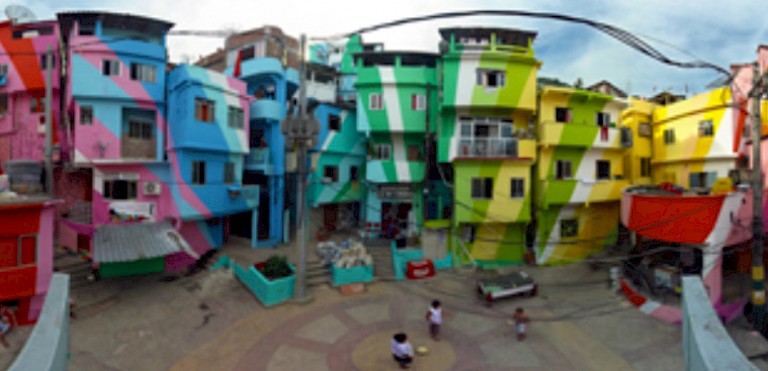



The successes of these initial projects in Vila Cruzeiro inspired the O Morro project in Santa Marta, a very large favela community in Rio de Janeiro. The hillside community is prominent and visible from many viewpoints in the city because of its location between the famous geographic landmarks and tourist destinations Pão do Açucar (Sugar Loaf Mountain) and Corcovado, which has the giant Cristo Redentor (Christ the Redeemer) monument on top. As seen from the attached before image, the artists selected an ordinary, rather nondescript plaza in the heart of Santa Marta.
Urhahn describes O Morro as "free art." It was not commissioned by a governmental agency, but rather funded privately through the Firmeza Foundation. (Initially, the Rio paint company Tintas Coral was a partner, but that company pulled out shortly after the project started. Tintas Coral’s employees did, however, train local residents how to use and apply paint with instructions about how to safely work on scaffolding.) Inhabitants of the favela were employed to paint their own houses according to a pre-arranged pattern (see attached drawing for the project). The vision is to turn their community into an “artwork of epic scale” which will “produce an explosion of color, joyfully radiating into the world.”
The project is organic and flexible enough to allow future expansion as more funds are raised. The transformation of this area of Santa Marta is visibly successful. Visitors are encouraged to ride a funicular up the steep mountain slope to the community to observe the area first-hand. According to one Rio de Janeiro resident, the project enticed her to visit the community, and now she frequently makes the trip up the mountain to dine at a marvelous Santa Marta restaurant.
All copyright belongs to Shanghai Academy of Fine Arts, Shanghai University.



